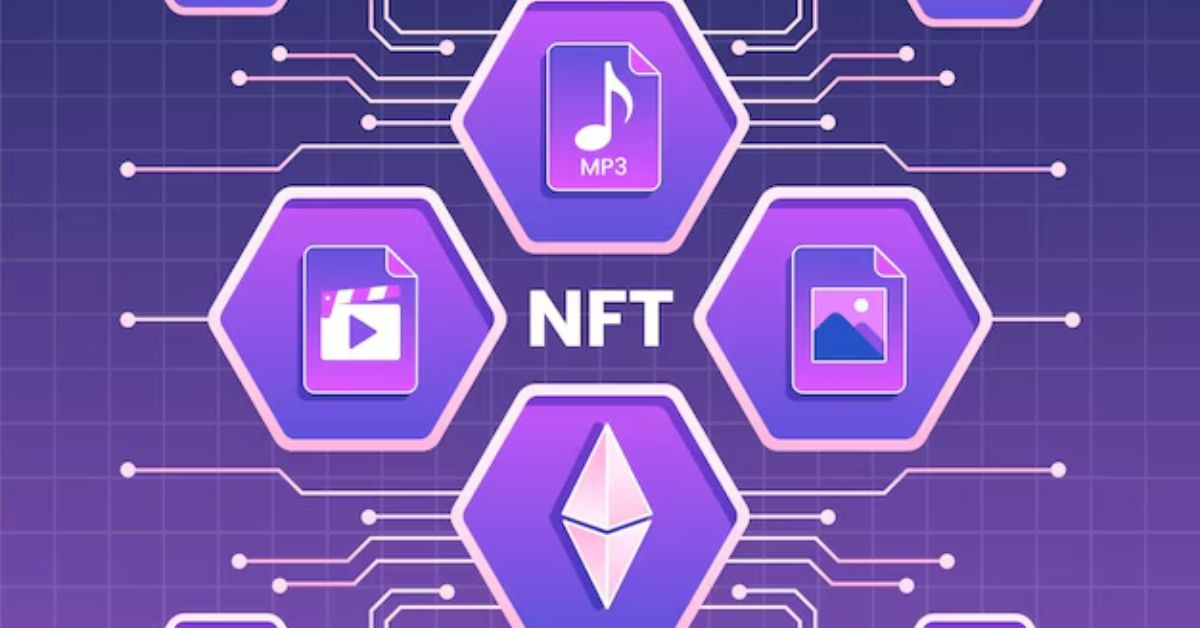In the fast-paced world of technology, new terms and concepts constantly emerge to capture the imagination of innovators, developers, and businesses. One such term gaining traction is Flashata, a concept that is rapidly shaping the digital landscape. Whether you’re a tech enthusiast or a business looking to stay ahead, understanding Flashata can provide valuable insights into its potential applications and benefits.
In this comprehensive article, we will explore what Flashata is, its key concepts, real-world applications, and the challenges that come with its implementation. By the end, you’ll have a solid understanding of Flashata and how it can drive innovation in various industries.
1. What is Flashata?
Flashata refers to an emerging digital concept that integrates high-speed data processing, advanced algorithms, and real-time analytics. While it is still evolving, Flashata aims to revolutionize data storage, retrieval, and real-time computation, making it possible to handle large datasets faster and more efficiently than ever before.
In simpler terms, Flashata focuses on providing instant access to large volumes of data, making it a highly valuable tool for businesses and industries that rely on real-time data processing.
2. The Origins of Flashata
Flashata is a relatively new concept, born out of the growing demand for faster, more reliable data processing. With businesses generating vast amounts of data daily, traditional systems have struggled to keep pace. Flashata was developed as a solution to this problem, utilizing advanced computing technologies such as solid-state drives (SSD) and in-memory processing to dramatically reduce latency in data access and processing.
Flashata’s name combines “flash,” a nod to the speed of flash storage, and “data,” signifying its role in handling massive data flows.
3. How Flashata Works
Flashat operates by integrating high-speed storage systems, such as SSDs, with intelligent algorithms that manage and process data in real-time. This combination allows Flashat to quickly access, analyze, and deliver data, even when dealing with large and complex datasets.
a) Data Storage
Flashat relies heavily on flash-based storage systems that allow for rapid data retrieval and minimal downtime. Unlike traditional hard drives, flash storage can handle high-input/output operations without slowing down.
b) Real-Time Processing
A key feature of Flashat is its ability to process data as it comes in, ensuring that businesses can make real-time decisions based on the latest information.
c) Advanced Algorithms
Flashat uses powerful algorithms to optimize how data is processed and stored. These algorithms reduce redundancy, streamline operations, and improve overall efficiency.
4. Key Features and Components of Flashata
Several core features make Flashata a cutting-edge technology for data handling:
a) Ultra-Fast Data Access
At the heart of Flashat is its ability to provide instantaneous access to data, regardless of the size of the dataset.
b) Scalability
Flashat is designed to scale easily, meaning it can grow with a business and handle increasing amounts of data without compromising speed.
c) Data Analytics
Built-in data analytics capabilities allow Flashat to not only store and retrieve data but also provide insights that can drive business decisions.
d) Low Latency
Flashat is optimized for minimal latency, making it ideal for applications where real-time data is crucial.
e) Seamless Integration
Flashat integrates easily with existing systems, reducing the need for complex migrations or overhauls of current infrastructure.
5. Importance and Benefits of Flashata
The importance of Flashat in today’s digital environment cannot be overstated. Here are some key benefits:
a) Faster Decision-Making
With real-time data access, businesses can make faster, data-driven decisions, giving them a competitive advantage in dynamic markets.
b) Cost Savings
By optimizing data storage and retrieval, Flashat reduces the need for expensive hardware upgrades or additional data storage solutions.
c) Improved Efficiency
Flashat eliminates bottlenecks caused by slow data processing, allowing teams to work more efficiently and focus on strategic tasks.
d) Enhanced Customer Experience
For businesses that rely on real-time data, such as e-commerce platforms or financial services, Flashat helps improve customer experience by reducing delays in service delivery.
e) Scalable Infrastructure
Flashata’s ability to scale means that businesses won’t need to worry about outgrowing their data infrastructure as they expand.
6. Applications of Flashata Across Industries
Flashata can be applied in a wide range of industries where fast data access and processing are critical. Some examples include:
a) Finance
Financial institutions need to process large amounts of data quickly for tasks like fraud detection, stock trading, and risk management. Flashata’s real-time capabilities make it ideal for these applications.
b) Healthcare
In healthcare, patient data needs to be accessed quickly for diagnostics and treatment planning. Flashat helps healthcare providers retrieve and analyze this data without delay, improving patient outcomes.
c) Retail and E-commerce
For online retailers, Flashat can enhance the customer experience by reducing load times, improving inventory management, and enabling personalized shopping experiences based on real-time analytics.
d) Logistics and Supply Chain
Flashat helps optimize logistics and supply chain operations by providing instant access to data on inventory, shipments, and deliveries, allowing for better coordination and faster response times.
e) Artificial Intelligence (AI) and Machine Learning (ML)
In AI and ML applications, large datasets are required to train models. Flashat allows for quick access to these datasets, speeding up the learning process.
7. Flashata in Real-World Use Cases
To illustrate the impact of Flashat, here are some real-world examples where this technology has transformed business operations:
a) E-commerce Giant Boosts Performance
An online retail platform implemented Flashat to improve the speed of its recommendation engine. The result was a 25% increase in conversions due to faster and more accurate product suggestions.
b) Bank Enhances Fraud Detection
A large financial institution integrated Flashat into its fraud detection system. The technology enabled the bank to process transactions in real-time, reducing fraudulent activity by 15%.
c) Healthcare Provider Accelerates Diagnostics
A hospital using Flashat for its diagnostic imaging systems saw a 30% reduction in the time it took to retrieve and analyze patient scans, leading to faster diagnosis and treatment.
8. Challenges in Implementing Flashata
Despite its benefits, implementing Flashat can present certain challenges:
a) High Initial Investment
The cost of setting up Flashat systems, particularly in large-scale operations, can be high due to the need for advanced storage solutions and hardware.
b) Data Security Concerns
Since Flashat processes large amounts of data in real-time, it is essential to ensure that security protocols are in place to protect sensitive information.
c) Technical Complexity
The integration of Flashat into existing systems may require significant technical expertise, particularly in organizations with complex infrastructures.
9. Solutions to Overcome Flashata Challenges
Here are some strategies to overcome the challenges associated with Flashata:
a) Phased Implementation
Instead of a full-scale deployment, businesses can start with a phased implementation, focusing on high-priority areas first to manage costs.
b) Robust Security Protocols
By adopting comprehensive security measures, including encryption, access controls, and regular audits, businesses can ensure data security while using Flashata.
c) Employee Training
Proper training for IT teams and employees can help minimize the technical complexity of implementing Flashata, ensuring a smooth transition.
10. The Role of Flashata in Digital Transformation
As businesses continue to embrace digital transformation, Flashat is playing a pivotal role in enabling companies to harness the power of big data. Flashata helps businesses achieve digital agility by:
- Streamlining data processes
- Improving operational efficiency
- Enhancing customer experiences
It serves as a cornerstone for companies looking to move away from traditional data management systems and adopt cutting-edge solutions.
11. Flashata vs. Other Emerging Technologies
How does Flashata compare with other similar technologies in the data landscape?
a) Traditional Databases
While traditional databases are still effective for many businesses, they often struggle with real-time data processing, where Flashat excels.
b) Cloud Storage
Although cloud storage provides scalability, Flashat delivers faster, real-time access, making it ideal for businesses that need immediate data processing.
c) In-Memory Computing
Flashat shares similarities with in-memory computing but is optimized for handling larger datasets and provides more flexibility in scaling.
12. Security and Data Privacy Concerns in Flashata
Given the vast amount of data processed through Flashata, security is a major concern. Businesses need to implement:
- Encryption: Ensure that data is encrypted both in transit and at rest.
- Access Controls: Limit access to sensitive data based on user roles.
- Data Compliance: Adhere to regulations like GDPR or HIPAA, depending on the industry.
By addressing these concerns, businesses can mitigate the risks associated with data breaches.
13. Future Trends and Developments in Flashata
Looking ahead, Flashata is set to evolve even further:
a) AI Integration
The integration of artificial intelligence into Flashata will enhance its data processing capabilities, allowing for smarter, predictive analytics.
b) Edge Computing
As edge computing grows in popularity, Flashat may be deployed closer to where data is generated, reducing latency and improving response times.
c) Increased Scalability
Future versions of Flashat are expected to offer even greater scalability, enabling businesses of all sizes to benefit from real-time data processing.
14. How Businesses Can Leverage Flashata for Growth
To fully leverage Flashat for business growth, companies should:
- Invest in Infrastructure: Ensure that they have the hardware needed to support Flashata’s capabilities.
- Focus on Data-Driven Decision Making: Use real-time insights provided by Flashat to guide business strategy.
- Continuously Optimize: As Flashat evolves, businesses should continuously optimize their systems to take advantage of new features.
15. Conclusion
In conclusion, Flashat is a groundbreaking concept that is transforming the way businesses handle data. With its ability to deliver real-time insights, enhance efficiency, and drive innovation, Flashat is poised to become a key component of modern digital infrastructure.
By implementing Flashata, businesses can stay competitive in an increasingly data-driven world, improving everything from customer experiences to operational performance.
FAQs
1. What is Flashata, and how does it work?
Flashat is a digital technology designed to provide high-speed data access and real-time processing through advanced algorithms and flash storage.
2. What industries can benefit from Flashata?
Flashat has applications in finance, healthcare, retail, logistics, AI, and any industry that relies on fast data processing.
3. What challenges does Flashata face in implementation?
Challenges include high initial costs, data security concerns, and technical complexity during system integration.
4. How can businesses overcome Flashata challenges?
By implementing phased rollouts, enhancing security protocols, and training staff, businesses can successfully integrate Flashat.
5. What is the future of Flashata?
Flashat is expected to integrate AI, expand scalability, and adopt edge computing for faster and more localized data processing.




